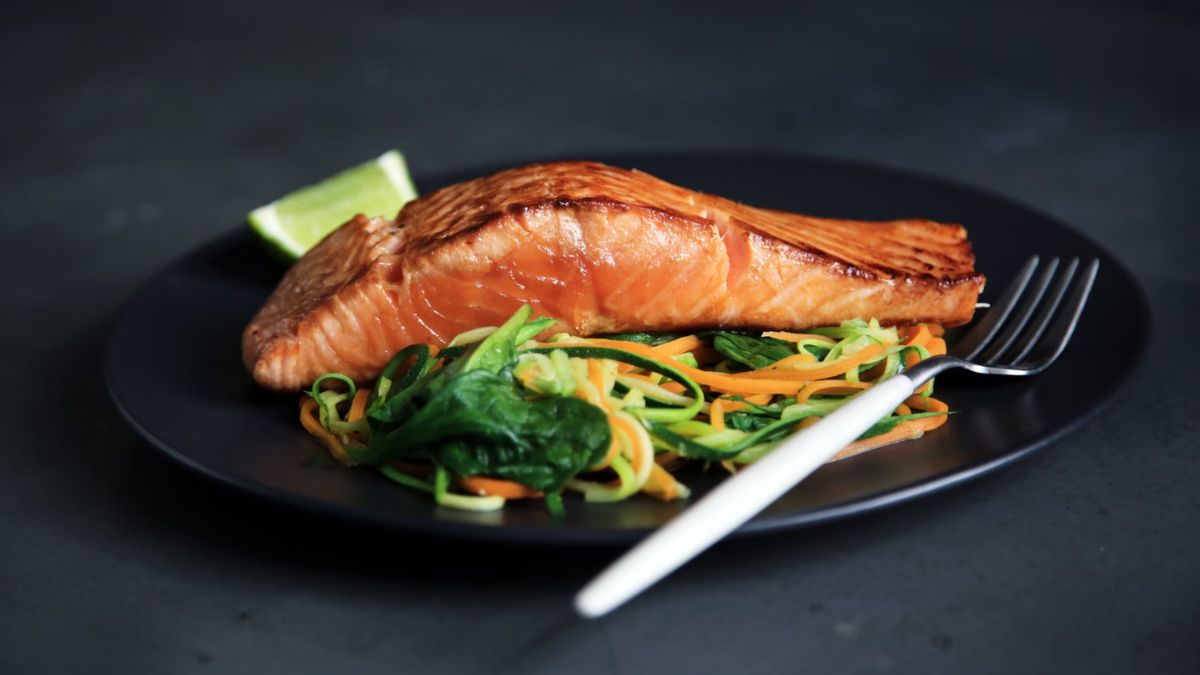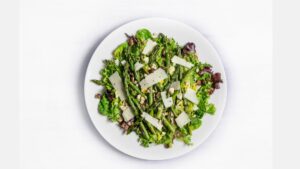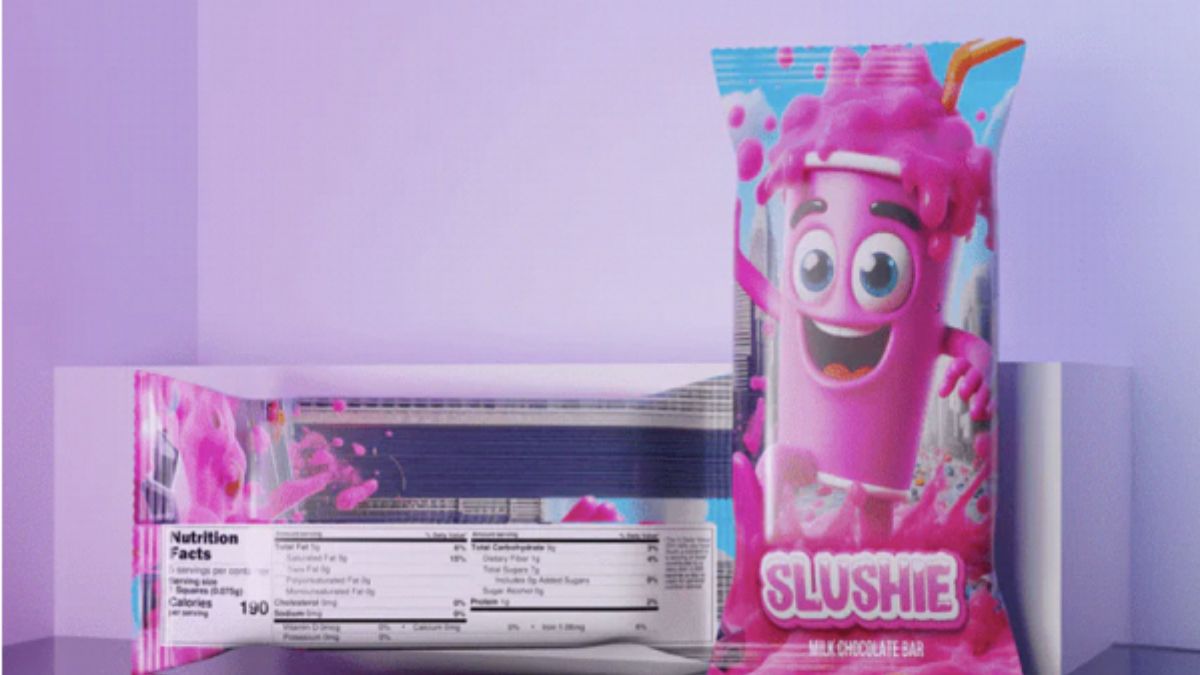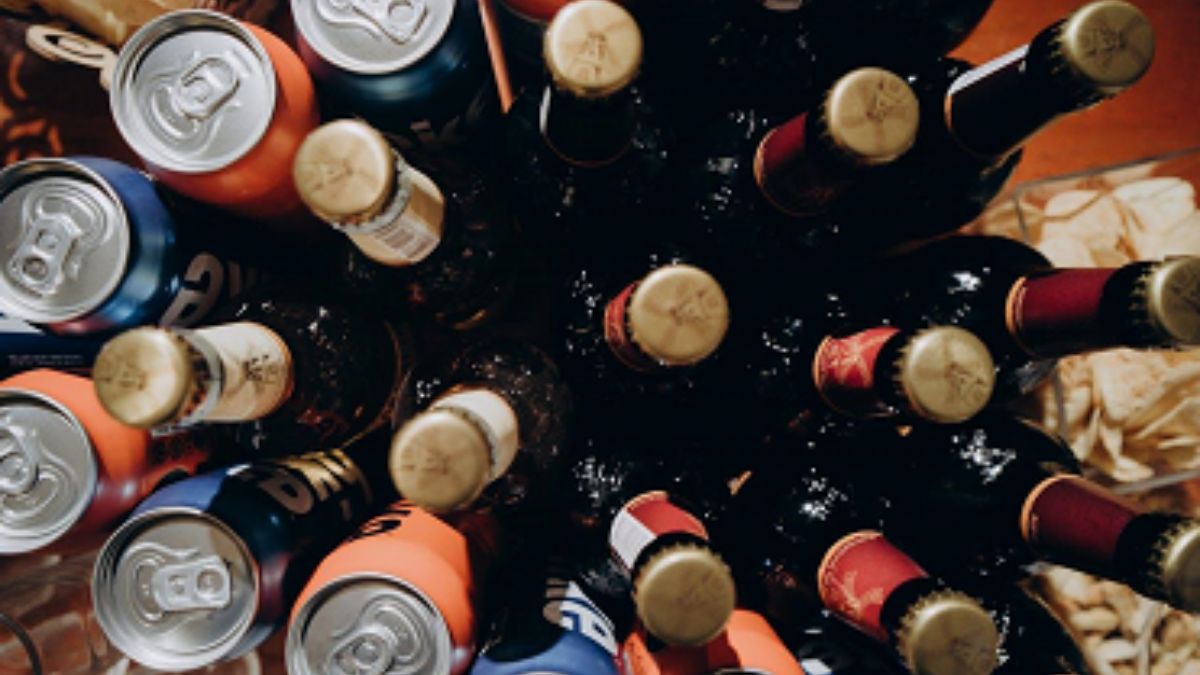FOOD
Considering NDIS Meal Delivery in Brisbane? Read Here to Learn More

NDIS participants can get funding for meal preparation and delivery as part of their daily living support, providing delicious, homemade meals directly to their doorstep. This service ensures healthy, delicious food is delivered right at the right time!
Convenience
Meal delivery services make meal planning, shopping, and cooking simpler. Many provide gluten-free and keto options along with vegetarian and vegan choices (https://www.delicious.com.au/eat-out/restaurants/gallery/the-5-best-vegetarian-restaurants-in-australia/ycn55pj4) – many even use recyclable or biodegradable packaging to reduce environmental impacts.
NDIS participants with disabilities may be eligible for meal support in their core plan, depending on their specific needs. They should consult their NDIS Planner to assess if this type of assistance fits into their plan details.
If your disability limits mobility, balance, or coordination, cooking can be difficult. With NDIS meal delivery in Brisbane, however, delicious home-cooked meals can be enjoyed without using up valuable energy on their preparation.
Brisbane boasts several NDIS-approved meal providers who provide convenient ready-to-eat meals and recipe kits you can make yourself. Before choosing one of them, be sure to compare menu variety, freshness of ingredients, delivery schedules, and pricing before making a final decision.
Variety
NDIS participants have multiple food delivery service options when it comes to their funding plan. Prepared meals may be provided, with an additional co-payment equal to approximately 30% of each meal’s cost, covering ingredients that were not part of its main dish.
Meal delivery services registered with NDIS provide healthy chef-prepared meals tailored specifically for specific diets such as gluten-free diets or diabetic needs. Services like Lite n Easy offer an impressive variety of gluten-free, low salt, and diabetic dishes from their extensive menu of breakfast, lunch, and dinner options as well as snacks and desserts – not forgetting snacks and desserts too!
Wholesomeness, an NDIS-registered meal service, offers healthy chef-inspired meals. Their weekly subscription offers breakfast, lunch, and dinner plus snack and dessert options – as well as snap frozen to retain vital nutrients – and is suitable for people who have sensitive stomachs, follow a vegetarian diet, require higher nutritional value meals, or are trying to lose weight. Their menu contains dairy and gluten-free dishes!

Kids’ Meals
If you’re having difficulty providing meals to your children and find it challenging, consider a service like Kiddome which offers kid-friendly dishes that can help alleviate some of your burdens. With their fun shapes and colors, Kiddome makes nutrition fun for kids to eat! In addition, many services also provide desserts or snack items specifically tailored for young minds.
NDIS participants may use their core support flexibly to pay for meal preparation and home delivery services, however, they must check with their planner first if this can be included as it might only be deemed reasonable and necessary by them.
Meal delivery services typically cater to various dietary preferences, from gluten-free and keto diets to vegan and vegetarian cuisine. Many NDIS Meal provider in Brisbane companies even provide specialty menus tailored specifically for specific health conditions like diabetes. You may even find services that specialize in providing texture-modified meals for people living with dysphagia.
Commercial kitchens use IDDSI guidelines to create meals that are then delivered in an insulated container with a lid, ready for storage in either your refrigerator or freezer until you’re ready to reheat them. Some service providers can deliver directly to your home; others require you to collect from their facility.
Nutrition
Meal delivery services offer delicious dishes tailored to specific dietary needs, taking away much of the guesswork of meal planning. Many services also cater to busy lifestyles by providing easy-to-follow recipes so that you can experience all the health benefits associated with a well-balanced diet without spending hours preparing it yourself.
Meals are designed by chefs and dieticians like these, to make sure they’re nutritious and healthy. Some providers specialize in specific food categories like vegan or gluten-free options while others focus on sustainable and environmentally responsible practices that make you feel good about choosing this kind of cuisine.
Some disability meal service providers also cater to specific dietary requirements, like Dineamic. Created as an athletic nutrition provider, their carbon-neutral kitchen now provides ready-made meals delivered directly to homes nationwide using ethical farming practices from Australian farmers.
Preparing meals alone can be challenging for participants with limited cooking skills, and this challenge should not be undertaken alone. To assist them with shopping and cooking at home, the NDIS provides funding for support workers to assist you. These services may be included under Category 1 Daily Living supports or Core Supports of your Plan.
If you prefer having meals delivered straight to your door, the National Disability Insurance Scheme can support meal services at around 30% of their costs. Many providers such as Lite n’ Easy and Youfoodz are registered with the NDIS and can assist you in booking their services. Your Plan Manager or Orange Plan Management can assist in selecting an NDIS Meal Delivery Brisbane provider best suited to meet your unique requirements.
FOOD
The Art of Sustainable Meat Sourcing: A Guide to Ethical Butchery

Butchery practice is experiencing a transformative shift toward more ethical and sustainable methods, reflecting a growing awareness of animal welfare and environmental impact. Ethical butchery emphasizes the importance of sourcing meat from farms, prioritizing humane treatment and sustainable practices, and ensuring that animals are raised and processed with care. This strategy encourages a closer relationship between customers and their food suppliers, supports regional farmers, and advances biodiversity. As a result, many consumers seek out butchers who adhere to these principles, leading to a greater demand for quality products. Those interested in this movement can explore a variety of fresh meat cuts available here, each reflecting the commitment to ethical sourcing and quality craftsmanship.
Why Sustainable Meat Sourcing Matters
Responsible meat procurement is essential for preserving the environment, protecting biodiversity, and reaping economic advantages. Conventional animal farming contributes to deforestation and releases greenhouse gases, whereas sustainable meat production minimizes carbon footprints and safeguards natural habitats. Furthermore, promoting sustainable meat practices encourages community self-sufficiency and bolsters local economies. Animals raised in ethical conditions yield higher-quality meat free from antibiotics and additives, producing more wholesome and flavorful meals. By selecting sustainable options, consumers endorse ethical standards and prioritize their health and well-being, creating a mutually beneficial situation.
Understanding Different Cuts of Meat
Delving into the world of meat cuts enhances culinary knowledge and adds an exciting dimension to meal preparation. Each cut holds unique characteristics that contribute to its flavor and cooking method. For instance, a marbled rib-eye steak offers rich flavor and tenderness, while a lean tenderloin delivers a delicate taste and texture. Recognizing these differences aids in selecting the perfect cut for any recipe, maximizing flavor and dining satisfaction.
Understanding these cuts elevates home-cooked meals and reduces food waste. By appreciating how various methods, such as grilling, roasting, or slow cooking, bring out the best in each cut, you can make full use of the meat you purchase. Whether grilling a rib-eye to showcase its rich marbling or braising a brisket until it’s melt-in-your-mouth tender, each cut can bring new flavors.
Popular Cuts and Cooking Tips
- Rib-eye: Known for its marbling and tenderness, this cut thrives when grilled or seared, locking in juices and flavors.
- Tenderloin: With its lean profile, it is best when quickly seared over high heat, preserving its delicate flavor and texture.
- Brisket: Ideal for slow cooking, brisket transforms into a tender, flavorful dish as its connective tissues break down gradually.
The Role of Local Butcheries in the Community
Local butcheries are more than places to purchase meat—they’re integral to community ecosystems. These establishments connect consumers directly with meat producers, often providing transparency about the meat’s origins and offering unique cuts not typically found in supermarkets. This relationship cultivates a sense of trust and community solidarity, enhancing consumer confidence in food quality.
Moreover, local butcheries offer distinct expertise, guiding consumers in selecting and cooking different cuts while emphasizing sustainable practices. Customers help their local economies by patronizing these small enterprises, guaranteeing that everyone in the community can continue to afford and access ethical and sustainable meat options.
How to Identify Ethically Sourced Meat
Choosing ethically sourced meat involves understanding labeling standards and recognizing certification. Labels such as “grass-fed,” “pasture-raised,” and “organic” indicate sustainable and humane farming practices. These labels assure consumers that their meat meets specific welfare and environmental criteria, often resulting in superior quality and nutrition.
To further identify ethically sourced meat, consider researching the farm or company that produced the product. Consumers can look for detailed information about farming practices and animal welfare standards, often revealing a sustainability commitment. Supporting companies prioritizing ethical practices contributes to a more sustainable and transparent food system.
Innovations in Sustainable Meat Technology
The sustainable meat landscape is evolving with groundbreaking innovations aimed at sustainability. Technologies such as plant-based meats and cultured meats are revolutionizing traditional perceptions of meat, providing alternatives that cater to ethical and environmental sensibilities. These eye-opening innovations address the ecological impact of conventional meat production, offering viable solutions that align with global sustainability goals.
These substitutes are becoming more widely known as research advances, satisfying the growing need for ecologically friendly dietary options. By incorporating these innovative options into their diets, customers may enjoy varied and nourishing meals while also helping to lessen the burden on natural resources. Embracing these changes indicates a shift in consumer behavior toward more environmentally conscious consumption and a commitment to preserving the environment for future generations.
FOOD
Custom Printed Candy Wrappers: 32 Tips & Ideas for Irresistible Packaging

When it comes to candy, the wrapper is the first sweet temptation—a whisper before the taste, a visual appetizer. Custom printed candy wrappers are more than packaging. They’re a mood, a vibe, a small piece of art you tear into without hesitation. If you’re creating custom candy wrappers, whether for a special event, a brand launch, or a niche product, it’s not just about covering the candy; it’s about making the whole experience unforgettable. Ready to go deeper? Here are 32 mind-bending tips to make your custom candy wrappers a full-on sensory experience.
1. Know Your Audience—Design for Their Eyes
⦁ You can’t just design for anyone. Think about who’s going to unwrap your custom candy bar wrapper. Is it a kid at a birthday party or a millennial buying an artisan chocolate bar? Tailor the design to what pulls them in.
2. Color Explosion
⦁ Colors aren’t just visual—they’re emotional. Go bold with your palette. Deep blues for calm, fiery reds for excitement, soft pastels for nostalgia. Make your colors pop like a sugar rush.
3. Texture Tells a Story
⦁ Add a tactile element. Think foil that crinkles, embossing that’s begging to be touched, or a matte finish that whispers luxury. Make your chocolate bar wrappers not just seen but felt.
4. Eco-Friendly Appeal
⦁ Sustainability is more than a trend. Use biodegradable materials or recycled paper. Make sure your candy isn’t just sweet but guilt-free when it comes to its environmental footprint.
5. Minimalism is Bold
⦁ Less is sometimes more. Strip down the design to the essentials. A simple logo, a pop of color, and a clean font can sometimes pack more punch than a busy design. Elegance lives in minimalism.
6. Play with Fonts Like a Rockstar
⦁ Fonts do more than communicate—they shout, they whisper, they dance. Choose fonts that align with the vibe of your candy. For something playful, go big and bold. For sophistication, keep it sleek and modern.
7. Unique Shapes
⦁ Who says your custom candy wrapper has to be rectangular? Break the mold with custom shapes—die-cut edges or wrappers that fold in unconventional ways. People love tearing into something unexpected.
8. Personalization is Key
⦁ Make every printed candy wrapper feel like it was designed specifically for the person holding it. Add a space for names or special messages. Personalization is the new obsession.
9. Make it Interactive
⦁ Add a QR code that leads to a quirky video, an app, or a giveaway. Turn the unwrapping into an adventure.
10. Use Foil for Drama
⦁ Foil catches light and attention. Whether gold, silver, or holographic, foil accents can give your customized candy wrapper a luxurious, high-end feel.
11. Retro Vibes
⦁ Nostalgia sells. Incorporate vintage design elements—like old-school fonts or a faded color palette—for a throwback feel that tugs on people’s memories.
12. Custom Candy Wrapper Typography Hierarchy
⦁ Not every word needs to scream. Play with font hierarchy—make your brand name loud and bold, and let the flavor details stay soft and subtle.
13. Customized Candy Wrapper Seals
⦁ Why not make the seal part of the experience? Custom wax seals, foil stickers, or even quirky printed instructions on how to open the personalized candy wrapper add an extra touch.
14. Bold Logos Front & Center
⦁ Your logo is the face of the candy. Don’t hide it in a corner. Let it stand proud, center stage, where it gets the spotlight it deserves.
15. Transparent Windows
⦁ If your candy looks as good as it tastes, show it off. A small transparent window in the custom candy bar wrapper gives customers a sneak peek before they even bite in.
16. Multi-Layer Unwrapping
⦁ Make the unwrapping an event. Think double layers—an outer custom chocolate bar wrapper with the branding and an inner, colorful foil that makes the customer’s fingers tingle as they unwrap.
17. Embossed Elements
⦁ Embossing isn’t just a design—it’s an invitation to touch. Raise parts of your custom candy wrapper—whether it’s the logo or a design detail—so that fingers run over it before the candy is even tasted.
18. Metallic Ink Magic
⦁ Go beyond standard colors. Use metallic ink that reflects light and shimmers in the right angles. A little gleam turns a simple chocolate bar wrapper into a treasure.
19. Custom Printed Candy Wrappers for Events
⦁ Design wrappers that fit the occasion. Whether it’s weddings, birthdays, or holidays, make your candy part of the celebration with customized candy wrappers made just for the event.
20. Floral or Abstract Patterns
⦁ Flowers or abstract swirls can add a sense of delicacy or whimsy to your design. Give your candy bar wrappers a bit of extra life with beautiful, subtle patterns that don’t overwhelm the main design.
21. Whimsical Copywriting
⦁ Don’t just put your brand name and flavor on there. Add a funny tagline, a pun, or a quirky message. Make your custom candy wrappers talk with personality before the candy even speaks for itself.
22. Interactive Elements
⦁ Include puzzles or trivia on the custom chocolate wrapper. Engage the mind while they enjoy the sweetness, making them linger on your brand longer.
23. Artistry Meets Functionality
⦁ The best custom candy bar wrappers combine function and flair. Make sure they open easily but still look gorgeous. Practicality can be beautiful, too.
24. Transparent Layers for Layers of Fun
⦁ Double-layer custom chocolate bar wrappers with transparent elements can create a peekaboo effect, adding to the mystery and fun of the unwrapping.
25. Typography that Reflects Flavor
⦁ The font you choose can reflect the flavor of your candy. Is it bold and brash, like a sharp citrus? Or smooth and flowing like a rich caramel? Make your font choices mirror your flavor.
26. Multi-Language Designs
⦁ If you’re selling to a global audience, don’t forget to add multi-language elements to your design. It shows inclusivity and awareness of your global market.
27. Textures That Surprise
⦁ Use a mix of matte and glossy textures on different parts of the chocolate bar wrapper to create an intriguing feel as people touch and unwrap.
28. Add a Foil Inside
⦁ Foil inside the custom candy wrapper not only protects the candy but adds a luxurious touch to the unwrapping experience.
29. Limited Edition Candy Wrappers
⦁ Create special edition designs for holidays, new product launches, or events. Limited runs of unique designs create a sense of urgency and exclusivity.
30. Mood-Driven Colors
⦁ Use colors that reflect the mood you want the candy to evoke. Warm colors like red or orange for comfort, cool blues for calm, and bright yellows for happiness.
31. Social Media Integration
⦁ Include your Instagram or TikTok handle right on the customized candy wrapper. Encourage customers to snap a photo of the wrapper and tag your brand—turning your wrappers into shareable experiences.
32. Personal Anecdotes
⦁ Add a personal touch, like a quote from the candy creator or a fun fact about the ingredients. Make the story behind the candy as sweet as the treat itself.
Creating custom printed candy wrappers is about more than just wrapping candy—it’s about creating an experience, a moment that starts with sight and touch before taste even enters the picture.
Brandmydispo creates custom candy wrappers tailored to your brand. Learn more here.
With these 32 tips, you’re well on your way to designing personalized wrappers that are as unforgettable as the candy inside. So go on—turn your custom candy bar wrappers into the stuff of dreams.
FOOD
Why Packaging Matters for Food and Beverage Brands

Packaging plays a key role in the success of food and beverage brands. It’s more than just a protective covering — it’s often the first thing consumers notice on the shelf. A product’s outer design is responsible for catching the attention of potential buyers, keeping the item safe during shipping, and making sure it remains fresh and ready for use. For food and beverage brands, the right choice of materials and design can be a powerful marketing tool that communicates the brand’s values, quality, and appeal.
In today’s highly competitive market, the outer presentation of products must meet multiple demands, from visual appeal to functionality and sustainability. With consumers becoming increasingly aware of waste and product quality, brands need to focus on both aesthetics and material choices to meet these expectations. In this blog, we will share why presentation is vital for food and beverage brands and discuss the factors that make it essential for building a successful product.
Attracting Consumers
One of the main functions of packaging is to attract consumers. When a customer walks down the aisle of a store, they are bombarded with multiple choices. Packaging is often the first thing that captures their attention, especially for food and beverages. A unique, visually appealing design can draw a consumer in, making them curious enough to pick up the product. Whether it’s through bright colors, clear labels, or innovative designs, packaging can influence consumer choices.
For instance, beverage brands often use sleek, modern designs to target younger audiences or eco-friendly materials to appeal to environmentally conscious buyers. Packaging for drinks needs to do more than just look good — it must communicate quality and functionality, all while protecting the product inside. Eye-catching and functional packaging can make a big difference in consumer decisions, especially when competing with other brands on the same shelf.
Protecting Product Quality
Packaging is not only about visual appeal; it plays a critical role in protecting the quality of the product. Food and beverages need to be stored in containers that preserve freshness, prevent contamination, and make sure the product is in perfect condition when it reaches the customer. The right one helps keep food fresh for longer, maintains the taste and texture of products, and prevents spoilage.
For example, perishable food requires airtight containers to prevent exposure to air and moisture, which can lead to mold or spoilage. Similarly, beverages need containers that prevent leaks while maintaining freshness. Low-quality materials can result in product damage during transportation or shorten the shelf life of items. Brands that invest in durable, well-designed containers provide a better customer experience, ensuring products reach consumers in optimal condition.
Building Brand Identity
A well-designed package reflects the personality of the brand and helps communicate its values. From the colors and fonts to the materials used, every aspect of packaging should align with the brand’s message. Consistency across different products makes the brand easily recognizable, building trust and loyalty with consumers.
For food and beverage brands, packaging can also highlight key brand messages, such as sustainability, health, or premium quality. For instance, a brand that promotes eco-friendliness may choose recyclable or biodegradable packaging to reinforce its commitment to environmental sustainability. By aligning packaging design with brand values, companies can connect with consumers who share the same priorities, fostering stronger brand loyalty.
Meeting Consumer Expectations
Consumers today have specific expectations when it comes to packaging, particularly for food and beverages. They want something that is easy to open, resealable, and convenient for on-the-go use. Meeting these expectations helps improve the overall consumer experience, which can lead to repeat purchases.
For example, single-serving snack packaging that can be easily opened and resealed is more appealing to busy consumers who need convenience. Similarly, beverage packaging with an easy-pour design or a resealable cap makes the product more user-friendly. When packaging meets consumer needs, it adds value to the product and can be a deciding factor in whether someone chooses to buy it again.
Sustainability Counts
Sustainability has become a major concern for consumers and businesses alike. More consumers are looking for products that use eco-friendly packaging to reduce waste and minimize environmental impact. For food and beverage brands, this means exploring packaging options that are recyclable, biodegradable, or made from renewable resources.
Using sustainable packaging not only appeals to eco-conscious consumers but also positions the brand as responsible and forward-thinking. In a market where environmental concerns are growing, companies that invest in sustainable packaging solutions can set themselves apart from competitors. It’s a win-win for brands looking to attract customers while reducing their environmental footprint.
Differentiation from Competitors
In a crowded marketplace, packaging is a key way to differentiate your product from competitors. When several similar products are placed side by side on a shelf, packaging can be what sways a consumer’s decision. Whether it’s through a bold design, unique materials, or innovative packaging features, standing out from the competition is critical for success.
Food and beverage brands that use creative or unexpected packaging solutions can quickly grab the attention of potential buyers. For example, a distinct package shape or a design that reflects the brand’s story can give it an edge. Unique packaging not only draws consumers in but also helps them remember the brand, increasing the chances of future purchases.
Packaging as a Marketing Tool
Packaging is more than just a protective barrier — it’s also a powerful marketing tool. The package itself communicates vital information to consumers, from product ingredients and nutritional facts to brand values and promotional messages. Eye-catching visuals, informative labels, and promotional elements like QR codes or offers can turn packaging into a direct line of communication with consumers.
A well-designed package can highlight the benefits of a product, making it easier for consumers to understand what sets it apart from others. In this way, packaging supports the brand’s overall marketing efforts, helping to reinforce key messages and build a stronger connection with consumers.
All in all, packaging goes beyond protecting the product — it attracts consumers, communicates brand identity, ensures product quality, and meets evolving consumer demands. From creating a memorable design to supporting sustainability efforts, the right packaging choices can make a significant impact on a brand’s growth and reputation. By focusing on functionality, differentiation, and sustainability, food and beverage brands can use packaging to connect with their audience and succeed in a competitive market.
-

 HEALTH5 months ago
HEALTH5 months agoIntegrating Semaglutide into Your Weight Loss Plan: A Practical Guide
-

 HOME IMPROVEMENT5 months ago
HOME IMPROVEMENT5 months agoHow to Choose the Perfect Neutral Area Rug for Every Room
-

 ENTERTAINMENT1 month ago
ENTERTAINMENT1 month agoInside a Coomer Party: A Closer Look at this Growing Trend
-

 CONSTRUCTION4 months ago
CONSTRUCTION4 months agoConstruction Site Safety Regulations in New York and Your Rights as a Worker
-

 LAW4 months ago
LAW4 months agoTeenage Drivers and Car Accidents in California: Risks and Parental Liability
-

 LAW4 months ago
LAW4 months agoGang Activity and Criminal Charges in CA: Protecting Your Rights
-

 FASHION5 months ago
FASHION5 months ago7 Celebrity-Inspired Elegant Summer Dresses For 2024
-

 LAW4 months ago
LAW4 months agoKentucky’s School Football: Concussions, Injuries, and Legal Options
